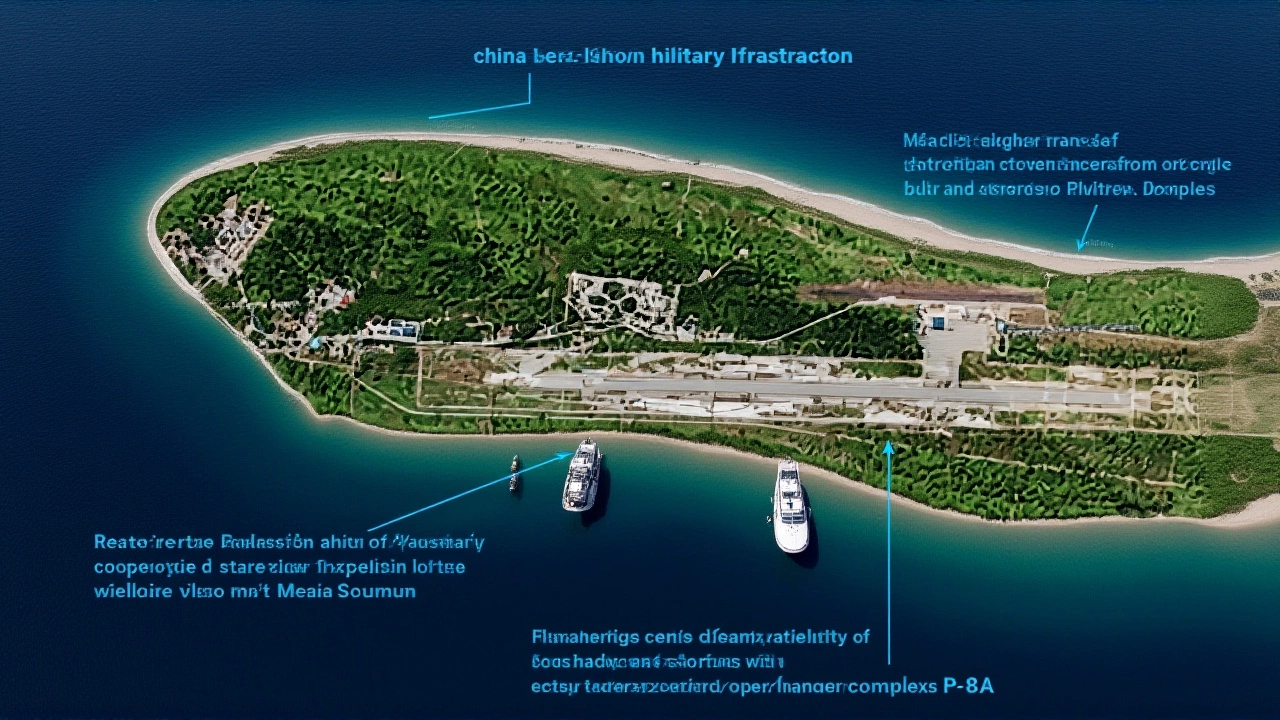China to Deliver 8 Hangor-Class Subs to Pakistan by 2028, Reshaping Indian Ocean Power Balance
 Nov, 24 2025
Nov, 24 2025
By 2028, Pakistan Navy will operate eight Hangor-class diesel-electric submarines built by China — a $5 billion deal that could redefine maritime power in the Indian Ocean. The first submarine is scheduled to join the fleet in 2026, with all eight commissioned by 2028, according to Admiral Naveed Ashraf, Chief of the Pakistan Navy. These aren’t just upgrades. They’re game-changers. Equipped with Air Independent Propulsion (AIP), advanced sonar, torpedoes, anti-ship missiles, and — critically — the Babur-3 submarine-launched cruise missile, they give Pakistan a stealthy, long-range strike capability it’s never had before. And they’re coming at a time when India’s own submarine modernization is lagging.
Why This Deal Is a Big Deal
The contract, signed in 2015, is China’s largest arms export ever, worth roughly ₹4,43,795 crore. Four submarines are being built in Hubei, China, along the Yangtze River; the other four are under construction at Karachi’s Karachi Shipyard & Engineering Works under a technology transfer agreement. Three have already been launched. What makes these subs dangerous isn’t just their firepower — it’s their silence. AIP lets them stay submerged for weeks, not days, making them nearly invisible to traditional sonar. That’s a nightmare for anti-submarine warfare. Hudson Institute analyst Liselotte Odgaard put it bluntly: "This significantly strengthens Pakistan’s anti-access and area denial posture. It complicates India’s ability to control the Arabian Sea."
India’s Strategic Dilemma
India can’t ignore this. Vice Admiral Sanjay Vatsyayan, Deputy Chief of the Indian Navy, confirmed during the Swavlamban 2025 summit in Delhi that New Delhi is "continuously monitoring the situation." But monitoring isn’t enough. India’s current diesel-electric fleet — the Sindhughosh and Shishumar classes — are aging. Most are over 30 years old. The Project-75 India (P-75I) program, meant to replace them with six German-designed AIP submarines built locally at Mazagon Dock, has been stuck since its approval in November 2007. No contract has been signed. The delay is staggering. Meanwhile, China is delivering a full squadron.
India is scrambling to respond. Cochin Shipyard Limited is building eight indigenous anti-submarine warfare (ASW) ships. The first, MAHE 24, is set to be commissioned on November 24, 2024. These ships carry advanced sonars, helicopters, and torpedoes — designed specifically to hunt submarines like the Hangor-class. But ships take time to build, train crews for, and integrate into operations. The gap is widening.

The Bigger Picture: CPEC and the Arabian Sea
This isn’t just about submarines. It’s about the China-Pakistan Economic Corridor (CPEC), a flagship of Beijing’s Belt and Road Initiative (BRI). CPEC gives China a land route from Gwadar Port in Pakistan to Xinjiang, bypassing the Malacca Strait — a chokepoint controlled by the U.S. Navy. Gwadar isn’t just a commercial port. It’s a strategic foothold. With the Hangor-class subs patrolling the Arabian Sea, China gains indirect influence over sea lanes that carry 95% of India’s trade. That’s not a coincidence. As Jagran reported, Chinese officials have explicitly told Pakistan to challenge India in this region.
Who’s Ahead? Numbers Don’t Lie — But They’re Misleading
India still has advantages. It operates nuclear-powered submarines like INS Arihant and has advanced indigenous radar and missile systems. China, meanwhile, boasts over 50 diesel-electric and 10 nuclear submarines — far more than India. But quantity isn’t everything. The real issue is proximity and capability. Pakistan’s Hangor subs will operate right off India’s western coast, within striking distance of Mumbai, Kochi, and the Andaman Sea. They can disrupt naval exercises, block supply lines, and force India to divert assets from the eastern theater.
Defense analyst Rahul Bedi told Defense News: "The Indian Ocean is no longer a quiet lake. China’s navy is growing fast — and Pakistan is now its forward operating base." India’s response must be more than reactive. It needs a long-term plan: faster P-75I signing, more ASW aircraft, satellite surveillance, and deeper cooperation with allies like the U.S., Japan, and Australia under the Quad.

What’s Next?
The next 18 months will be critical. If the first Hangor-class submarine is commissioned in 2026 as planned, India will face its first operational threat from a modern, stealthy submarine fleet in the Arabian Sea. Expect increased patrols by Indian P-8I Poseidons, more joint ASW drills with the U.S. Navy, and possibly a push to fast-track the P-75I deal. There are rumors India may also accelerate its nuclear submarine program — INS Arighat, the second Arihant-class boat, is expected to be operational soon.
Meanwhile, China is quietly expanding its naval footprint. It’s already stationed ships in Djibouti, has agreements in Sri Lanka and Myanmar, and now has a submarine force in Pakistan. This isn’t just about Pakistan. It’s about China’s vision for the Indian Ocean — and India’s ability to defend it.
Frequently Asked Questions
How will the Hangor-class submarines change Pakistan’s naval strategy?
The Hangor-class subs give Pakistan its first credible second-strike capability at sea. With AIP and Babur-3 missiles, they can lurk undetected for weeks and launch precision strikes on Indian ports, carriers, or supply ships. This shifts Pakistan from a defensive posture to one of deterrence — forcing India to spread its naval assets thinner to protect its entire western coastline.
Why is India’s Project-75I delayed for so long?
The P-75I program has faced bureaucratic delays, shifting requirements, and competition among global bidders — including France, Germany, and South Korea. Despite approval in 2007, finalizing the contract has stalled due to disputes over technology transfer, cost overruns, and local manufacturing benchmarks. The delay leaves India vulnerable just as Pakistan’s submarine threat grows.
What role does the Babur-3 missile play in this threat?
The Babur-3 is a submarine-launched cruise missile with a range of 450 km and precision guidance. It can carry conventional or nuclear warheads. When paired with the Hangor’s stealth, it turns Pakistan’s subs into mobile launch platforms capable of hitting targets deep inside India — including naval bases and even Delhi. This is the first time Pakistan has had such a capability.
Is this a direct threat to India’s nuclear deterrent?
Not directly — India’s nuclear submarines like INS Arihant are far more advanced and operate in the Bay of Bengal. But the Hangor-class could threaten India’s conventional naval forces, which protect its nuclear delivery platforms. If Pakistan can disrupt India’s sea lanes or force its carriers to retreat, it weakens India’s overall deterrence posture in a crisis.
How does this affect India’s relationship with the U.S. and Quad allies?
It strengthens India’s case for deeper defense ties. The U.S. and Japan are already sharing ASW technology and intelligence with India. The Hangor threat may accelerate joint patrols in the Arabian Sea, and possibly even lend India access to advanced sonar systems or P-8I upgrades. This isn’t just a bilateral issue — it’s a regional security pivot.
Could this lead to an arms race in the Indian Ocean?
Absolutely. India may accelerate its nuclear submarine program and invest in undersea drones and autonomous ASW systems. China could deploy more submarines in the region. Sri Lanka, Bangladesh, and even Oman might seek similar deals. The Indian Ocean is becoming the next Cold War battleground — not with nukes, but with silent killers beneath the waves.